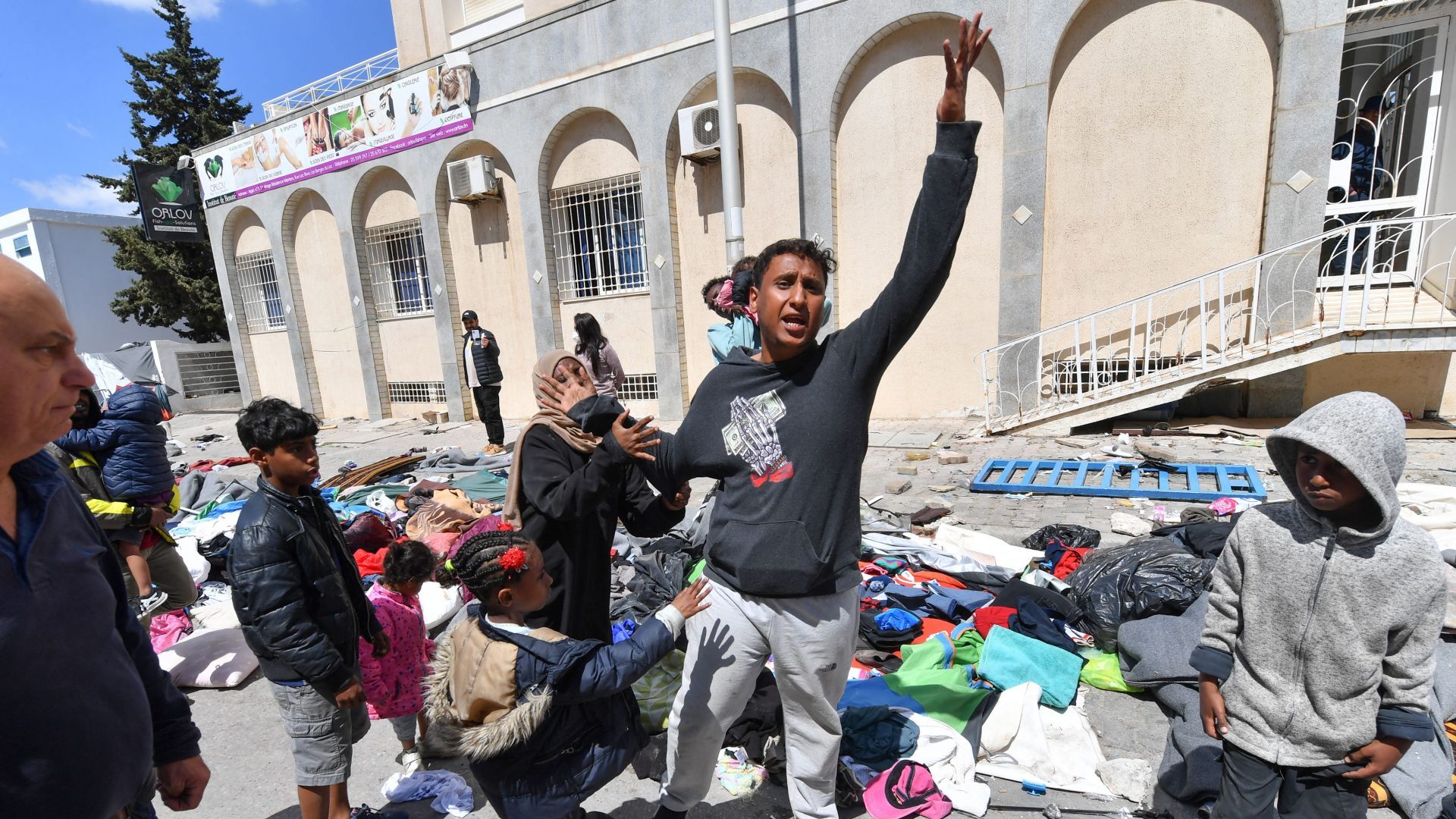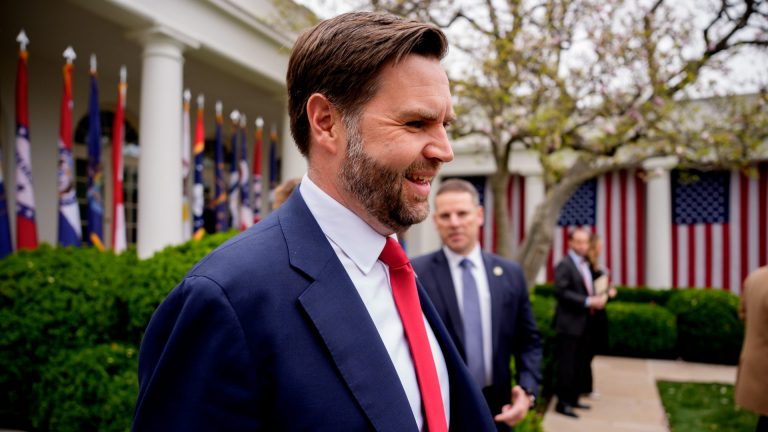In the early hours of Thursday morning, 75 kilometres southwest of the southern Peloponnese, a rescue mission searched for survivors. An overcrowded fishing boat had gone down off the Greek coast.
The enormity of the tragedy soon became clear, with at least 80 dead and hundreds more missing. Residents of Kalamata banded together to help survivors how they could. The crisis is yet another horrific example of Europe’s failings in managing the flow of migrants who make the crossing from north Africa.
In the narrow alleyway in the centre of Tunis, outside the International Organisation for Migration, (IOM) sits a shanty town of tents and crudely constructed shelters, hewn together from timber and tarpaulins. In the gaps between the tents, children play with whatever their imaginations allow, while women worry over stoves and the men sit and brood.
Most have come here from Sudan, others from Sierra Leone, some from Yemen. The journey generally takes around two weeks, travelling overland through extreme conditions and desert to reach the northern shores of Tunisia. For some, trapped within the militia encampments in Libya, and subjected to beatings and, in the worse extremes, rape, it can take years.
At least two of the women in the Tunis camp, one pregnant, report having lost husbands to Libya’s militias. Abdul, from Sierra Leone, is only around thirteen months old and for all of his brief life, Abdul has been a problem. So far, he has already been made to feel unwelcome in Guinea, Mali, Algeria and, most recently, Tunis.
Now, since the President of Tunisia ushered in a tumult of racism during an extraordinary February speech, Abdul, along with his mother, have been forced from their homes to join the dispossessed and the desperate living on the street. Even if, by some miracle, his mother manages to scrape together the 4,000 Tunisian Dinars, (around £1,200) needed to make the deadly journey across the Mediterranean, Abdul’s problems are only beginning.
Last year, 330,000 irregular crossings were made into the European Union, up 64% on the previous year. This year’s numbers are expected to be even higher.
The bulk of irregular migrants enter Europe through the continent’s southern border, principally Italy. Every year, in addition to the thousands of undocumented migrants who make the rough winter crossing in swiftly constructed metal boats, comes the summer exodus of North Africans, who cross the Mediterranean on typically better equipped sailing vessels.
Irrespective of their means of arrival, or the cause for their flight, their presence in Europe is proving increasingly unwelcome. Across Europe, domestic economies are straining under rising costs of living, all the while, opportunistic politicians are stoking nativist sentiments by presenting immigration as an existential threat to Europeans’ way of life.
In 2015, as a result of the war in Syria, large numbers of migrants made their way to Europe – many EU states refused to accept those fleeing the very worst of humanity, closing their borders and refusing entry. Attitudes appear to have hardened since.
In Sweden, in 2022, the far right Swedish Democrats made astonishing gains, having run for office on a platform that was expressly anti migrant. In Italy, Georgio Meloni’s right wing Brothers of Italy, a formerly fascist party, is in office in Rome. Hungary simply concentrates on keeping migrants out. Denmark, a formerly liberal nation, now ignores EU asylum law entirely and deports irregular migrants to their country of origin, even if that means Syria. Austria, straining after receiving over 100,000 non-Ukrainian refugees during 2022 has declared Europe’s asylum system “broken.”
They may have a point. Since 1990, irregular migration into the EU has been governed by different versions of the same protocol, The Dublin Convention. Essentially, it confirms the bloc’s longstanding commitment to the Geneva Convention, and to the idea that all irregular arrivals within Europe are allowed to have their case for asylum heard fairly, typically within the first EU state they entered.
As you might imagine, this has placed an undue strain upon the EU’s southern border states and through much of the bloc as a whole. All the while, migrants keep drowning – over 1,000 so far this year.
The EU’s remedy is the Pact on Migration and Asylum, expected to be law by April 2024. Under the new legislation, the EU will be able to order the relocation of migrants from the periphery countries to other EU states, should an emergency make their numbers untenable. It’s similar to the Italian decision to impose a six month state of emergency over migrant numbers, which was declared in April.
However, to its critics, the new pact is little more than a gesture.
“Migration is very high on the agenda in Brussels. We’re seven to eight years on from the last so-called migration crisis, however, and we’re still no closer to a unified position,” said Alberto Horst Neidhardt, a senior policy analyst at the European Policy Centre. “Discussion now is on reception conditions and how irregular migrants can be effectively redistributed.”
“The Dublin Convention, (which remains the EU’s foremost response) is more than ten years old, and is poorly implemented. But its reform under the Pact remains uncertain. Because of that, the focus ends up being on how to contain irregular arrivals,” Horst Neidhardt said. “We need to understand that the political map has changed over time. The hardliner positions of Central European countries are now winning more and more support.”
For many observers, the entry of those eastern European states, along with the UK’s ill starred withdrawal, have fundamentally altered the nature and values of the EU. Given this, what may have been true for the twelve signatories of 1990, may not be true for the 27 countries of the current EU.
“The EU needs to agree on its core principles,” Martin Ruhs, a political economist at the European University Institute in Florence, Italy said. “It needs to decide what European values are and work outwards from there.”
“The Geneva Convention and the right to asylum are coming under increasing threat, and there are voices within the EU saying they are no longer fit for purpose,” he told The New European.
According to Professor Ruhs, agreeing on core principles might go some way to opening up more legal routes into the EU, as well as increasing the number of professional Visas on offer, to help counter Europe’s shrinking and ageing population. Moreover, if Europe could determine an ethical asylum system within its own borders, it would allow it to engage more with outside countries, such as those in North Africa, much in the way the EU has worked with Turkey.
Since 2017, Italy has put €75 million into the Tunisian coast guard. Libya, with no central authority overseeing the country’s competing militias and coastguard, has been provided with “money, vessels, training, and aerial surveillance to abusive Libyan armed groups so they can intercept and forcibly return people to Libya,” according the Human Rights Watch. The organisation also noted the abuse – including torture and sexual assault – that migrants hoping for better lives in Europe are subjected to upon their return.
Little of this matters to Abdul. He now just wants to show how he can stand and walk. He totters across the muddy ground towards the water bottle established as his finishing line. Ibrahim Sosay looks on and smiles. He travelled for two weeks overland from Sierra Leone with his own wife and child, before being captured by militias in Libya. “I just want a boat,” he says, “any boat. Metal boat, flat bottomed boat, wooden boat, I’ll take anything.”
Some names have been changed to provide anonymity










